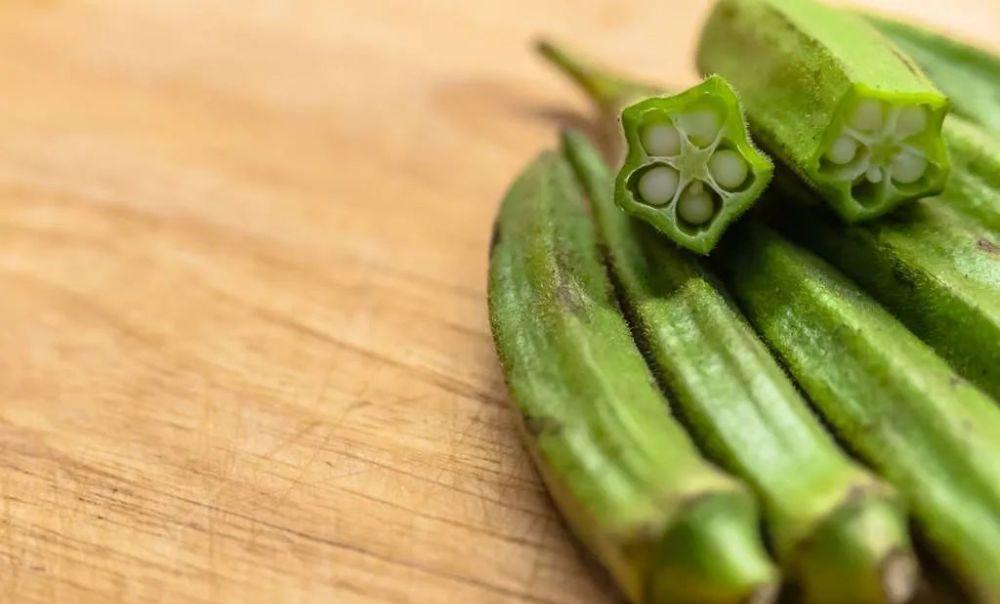In the childhood memories of many people, it seems that the figure of okra cannot be found. As a foreign ingredient, okra has become a home-cooked dish on the Chinese table since then.
The angular, fluffy "face value", crisp and smooth taste, and the mucus and white seeds that come with it make okra become a popular internet red vegetable for some people.

Life Times (search for "LT0385" within WeChat to follow) interviews experts to tell you what the mucus of okra comes with it, and teaches you a few tricks to eat through its nutrition.
Experts interviewed
Gao Jian, Director of the Department of Nutrition, Zhongshan Hospital Affiliated to Fudan University
Doctoral candidate in botany, Institute of Botany, Chinese Academy of Sciences, Liu Fangpu
What is the mucus that comes with okra?
One of the more widely accepted accounts for the origin of okra is that it originated in Africa and later spread around the world. In the Eastern Han Dynasty work "Shuowen Jiezi", there was a relevant record of "Huang Kui".
At the beginning of the 20th century, okra was introduced to the mainland, and its name was diverse, such as: in Jiangxi, Hunan, it is called yang chili pepper, and Guangdong is often called gietto.
Okra is crisp and tender in texture and has the following nutritional features:
1
The self-contained mucus is rich in cellulose
Cutting okra with a knife will take on a "small five-pointed star" shape, in which the mucus wrapped in it is the most prominent feature of okra, containing 50% soluble cellulose.
The main component of sticky substances is okra polysaccharide, which belongs to dietary fiber, which has the effect of assisting in lipid reduction, antioxidants, enhancing satiety, and relieving constipation.
In addition, there are rumors that okra is the "nemesis" of diabetes, but this statement is actually misleading. Okra helps control blood sugar because its mucus plays a role in alleviating the rate of postprandial blood sugar rise. This is the basic function of dietary fiber, not unique to okra, nor can it replace insulin.
2
There are many types of nutrients
Each 100 grams of okra contains about 4 mg of vitamin C, 1.03 mg of vitamin E and 310 mcg of carotene.
It is also rich in trace elements such as zinc and selenium, and is also an ideal source of calcium, which is very helpful for enhancing the body's resistance.
Darker okra is slightly better in carotenoids and anthocyanins; green okra has a higher chlorophyll content.
3
High moisture content, low calorie
Okra is high in water content and very little fat, containing only 0.1 grams of fat per 100 grams of okra young fruits, which is very suitable for people who want to lose weight.
Okra with fluff is fresher
Judging from the name, many people mistakenly think that okra is exclusive to autumn. In fact, okra can be eaten all year round, but because of its cool nature, it is more commonly recommended to eat in summer or hot climates.
To pick a good okra, it is recommended to distinguish according to the following 5 "looks":
Specific length: the smaller the okra, the more tender it is, the best 5 to 10 cm, more than 10 cm carefully selected.
Look at the surface: fresh okra has a full shape, a well-proportioned and bright color, and no wrinkles, no spots, and no scars on the surface.
Look at the fluff: Fresh okra has a layer of white villi on the surface, such as well-preserved villi, indicating that the fruit is better stored, and the whiter and more tender the fluff, the younger the fruit.
Pinch soft and hard: gently pinch with your hand, feel not hard, a little toughness as well. The harder okra is, the older the taste, and it loses its unique aroma and tender texture when eaten.
Smell: Fresh okra has a natural fragrance, and fresh okra lacks fragrance.
3 Cooking Tips to Lock in the "Freshness"
Okra is cooked in a variety of ways, including cold mixing, hot stir-frying, frying, stewing, salad, soup and so on. In order to maintain the taste fresh and tender, it is recommended to cook and store the following points:
Blanch for 3 to 5 minutes before cooking
Before making okra, it is best to blanch in boiling water for 3 to 5 minutes to help remove the astringency.
Cook whole
To prevent mucus loss, okra is best cooked whole, with less loss of water-soluble vitamins and soluble dietary fiber. If it is too big, it is recommended to blanch in half.
Stir-fried with meat is more delicious
Okra has more soluble dietary fiber, and stir-frying with meat can help reduce meat cholesterol intake.
A simple method is to blanch it directly and cut it into sections, mix it with bell peppers and cooked beef with flaxseed oil, or perilla oil, or cut into thin slices and add egg custard as an ingredient.
It should be reminded that okra will be "frostbitten" in the refrigerator and stored in the shade of the kitchen, and the best storage temperature is 6 ° C ~ 8 ° C. Okra is easy to chew and is best eaten within 24 hours of buying it home.
In addition, do not often turn it when storing, otherwise the abrasions and bruises will quickly brown and turn black, resulting in inability to eat. ▲
Editor of this issue: Zhang Yu
Wait, click in the bottom right corner to look at it and go again